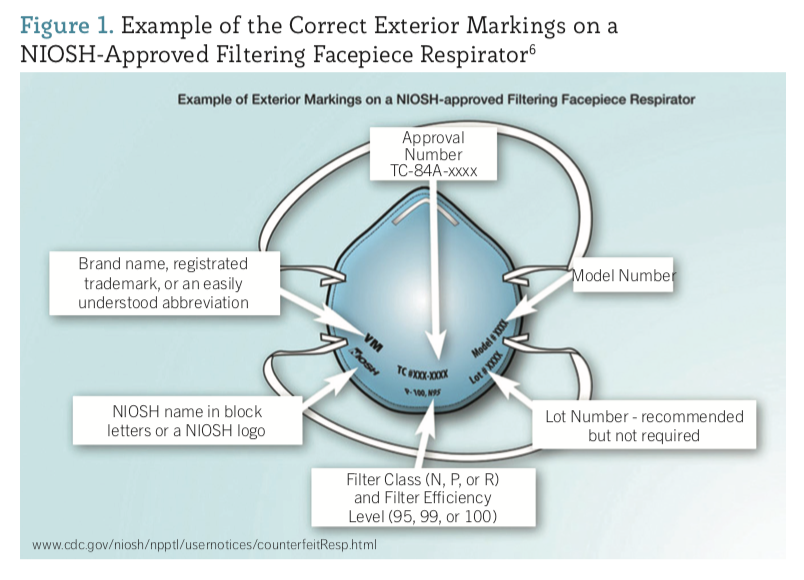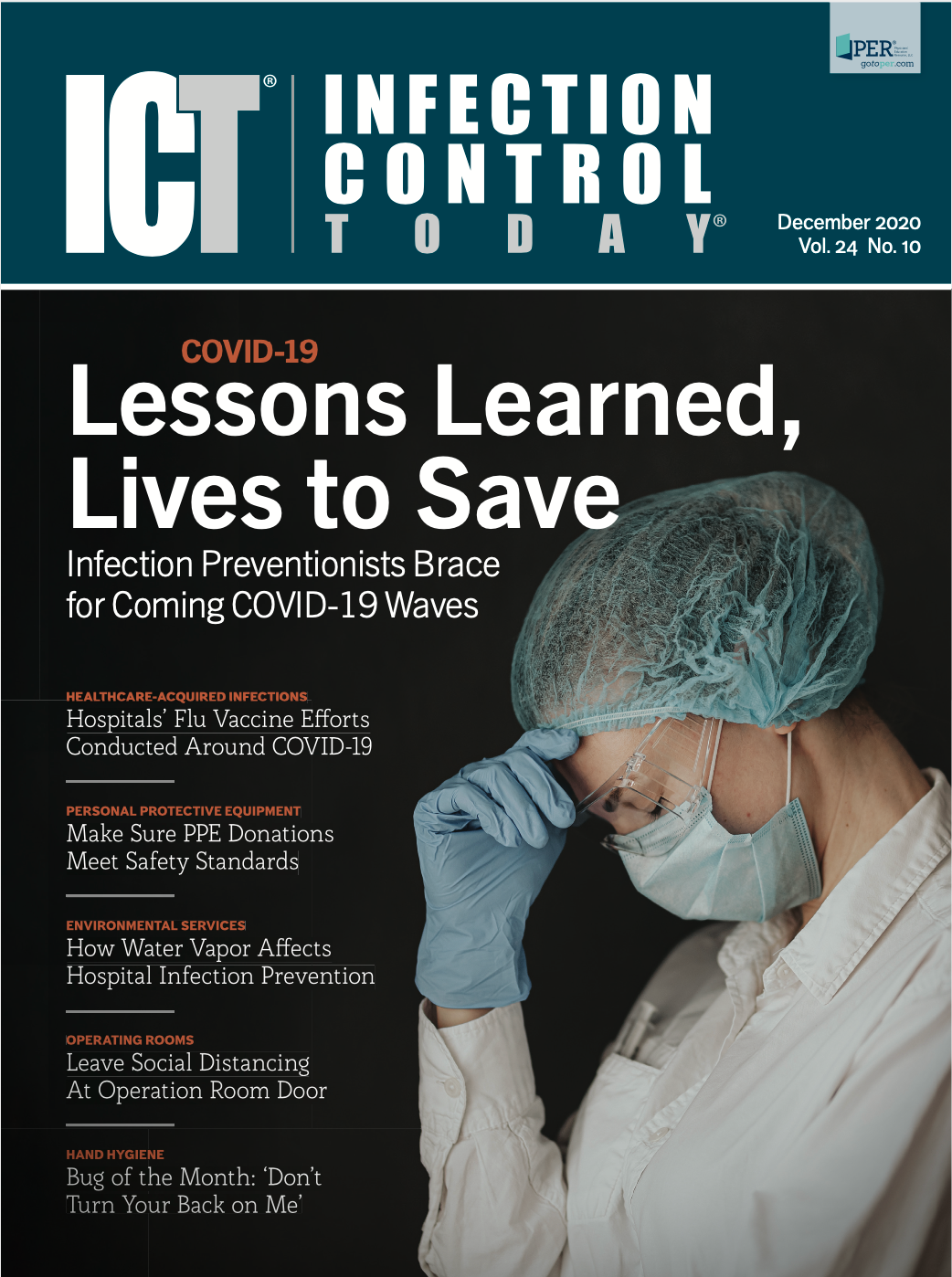Creating Guidelines for Hospital Donations During the COVID-19 Pandemic
If you are an infection preventionist and are not currently involved in product review, now may be a great time to reach out to your supply chain team to explain the perspective you can bring to the table and ask to be involved.
Along with it brought the generosity of many to help others in a variety of ways. As hospitals and healthcare facilities quickly began to run out of regular supplies such as personal protective equipment (PPE) and hand sanitizer, numerous companies and individuals quickly offered their support in the form of donations of supplies or production of much-needed items. However, with the abundance of donations and new products that have come to market, it is important to still validate the effectiveness and authenticity prior to use in the healthcare setting.
As COVID-19 spread through the United States, inventory of PPE rapidly declined and, as respiratory season continues, the potential for PPE shortages remains. When purchasing or accepting PPE or other medical supplies from new manufacturers, the following criteria are important to consider.
Obtaining Samples Prior to Purchase or Donation
COVID-19 has offered the opportunity for new manufacturers and inventors to come to the market, especially when it comes to healthcare supplies. If it is possible to obtain samples of products that are available for purchase or donation before they are bought or delivered, multidisciplinary teams can have the opportunity to review items to determine whether the items will be useful and where they can be best used. For inventors who are hoping to donate products, this can also be a way to offer feedback so that changes can be made before products are donated.
Standards for PPE
Gowns, gloves, facemasks, and eye protection worn in clinical settings all have standards to prove compliance in how products are made and used. Common standards organizations are ASTM Inter- national (indicated by the symbol ASTM on products, formerly the abbreviation for the American Society for Testing and Materials)1, European Standards (shown with EN)2, American National Standards Institute (ANSI)3, the National Institute for Occupational Safety and Health (NIOSH)4, and the US Food and Drug Administration (FDA)5. Many of these standards have been made readily available during the pandemic. Supplies which do not meet these standards, should be carefully assessed on whether clinical use is appropriate.
Although proof of standards on packaging and PPE are often good indicators that products have been validated, throughout the pandemic, many have seen the use of counterfeit products which are falsely marketed and sold. One of the most common imitated PPE items hospitals have seen have been respirators. NIOSH regularly updates its website6 to show non-NIOSH- approved respirators and common signs to indicate that respirators may be counterfeit.
Lastly, when evaluating new PPE, consideration in how the PPE may affect donning and doffing should be reviewed. When new PPE is brought into a facility, additional training may also need to be feedback so that changes can be made before products are donated.

Hand Sanitizer and Disinfectant Wipes
Two items which many infection preventionists (IPs) are infamous for always having with them are hand sanitizer and disinfectant wipes. These products have not only vanished from stores and hospital shelves, but have significantly increased in price. As many common brands of hand sanitizer and disinfectant wipes ran out of stock, manufacturers of other products have come to the market with their own versions of these highly sought after items. When accepting or purchasing hand sanitizer, the US Centers for Disease Control Prevention (CDC) recommends the use of an alcohol-based hand sanitizer that contains at least 60% alcohol.7 Hand sanitizer that contains higher amounts of alcohol is not necessarily better as it can lead to skin drying or adverse reactions. In addition to the amount of alcohol, scent should also be considered, as fragrances in the healthcare setting can affect both patients and healthcare staff.
Prior to purchasing new wipes to use in facilities, it is important to make sure that they are not only effective, but that the con- tact wet time to be effective is a reasonable time. Because SARS-CoV-2 is a novel virus, the US Environmental Protection Agency (EPA), developed a database, known as List N8, which is updated frequently to document products which are effective against SARS-CoV-2 along with the contact time required. After ensuring wipes are appropriate for use, it is also vital to check that they are compatible with equipment that will need to be disinfected.
Food Donations
Generosity during the pandemic has not only been seen with medical supplies. Many businesses, including restaurants, have wanted to show support to frontline providers through the donation of food. In accepting food donations on units, requesting individually packaged meals over buffet trays is preferred. If food is brought to a unit, remembering to place it in the refrigerator if it is not consumed in a timely manner is also important to avoid spoilage. When eating, remembering to stagger meals in common spaces is also a priority to reduce the number of individuals to maintain physical distancing.
As time goes on, the hope is that the supply chain for much needed products will be restored. In the interim, it is important to maintain standards in bringing in new items and donations to protect not only healthcare providers, but anyone who enters the health system as well.
If you are an IP and are not currently involved in product review, now may be a great time to reach out to your supply chain team to explain the perspective you can bring to the table and ask to be involved. Multidisciplinary teams can be formed to provide guidelines for what to look for when supply chain teams have to purchase products with a quick turnaround and samples cannot be obtained utilizing the guidelines provided above. If products can be reviewed in person, further comments can be provided as each product is analyzed to further document the importance of an evaluation. In all sectors of how COVID-19 has impacted us, it has also shown us the many ways in which working together as a team benefits everyone.
ANJALI BISHT, MPH, CIC, is the lead infection preventionist at an academic medical center that comprises a number of hospitals and an extensive primary care network in the Los Angeles region.

References:
- ASTM Standards & COVID. ASTM International website. Accessed October 1, 2020. https://www.astm.org/COVID-19/.
- Coronavirus: European standards for medical supplies made freely available to facilitate increase of production. European Commission website. Updated March 20, 2020. Accessed October 1, 2020. https://ec.europa.eu/commission/presscorner/detail/en/ip_20_502.
- Association for the Advancement of Medical Instrumentation (AAMI). ANSI/AAMI PB70:2012 Liquid barrier performance and classification of protective apparel and drapes intended for use in health care facilities. Arlington, VA. AAMI; 2012.
- Approved Particulate Filtering Facepiece Respirators. CDC website. Updated April 9, 2020. Accessed October 1, 2020. https://www.cdc.gov/niosh/npptl/topics/respirators/disp_part/default.html.
- Coronavirus Disease 2019 (COVID-19). FDA website. Last Updated 10/1/2020. Accessed October 1, 2020. https://www.fda.gov/emergency-preparedness-and-response/counterterrorism-and-emerging-threats/coronavirus-disease-2019-covid-19#products.
- Counterfeit Respirators/Misrepresentation of NIOSH-Approval. CDC website. Updated September 29, 2020. Accessed October 1, 2020. https://www.cdc.gov/niosh/npptl/usernotices/counterfeitResp.html.
- Hand Sanitizer Use Out & About. CDC website. Updated September 10, 2020. Accessed October 1, 2020.
- List N Disinfectants for Coronavirus (COVID-19). EPA website. Updated October 1, 2020. Accessed October 1, 2020. https://www.epa.gov/pesticide-registration/list-n-disinfectants-coronavirus-covid-19.

Uncovering a Hidden Risk: Alcohol Use Disorder Significantly Increases C difficile Infection Rates
April 10th 2025A groundbreaking study reveals a strong connection between alcohol use disorder and increased risk for Clostridioides difficile infection, challenging traditional assumptions and calling for enhanced infection prevention protocols.